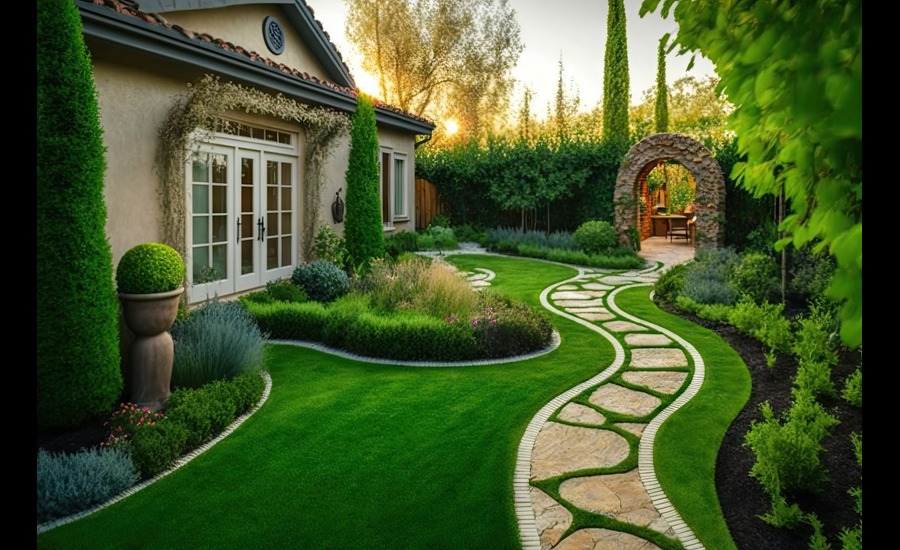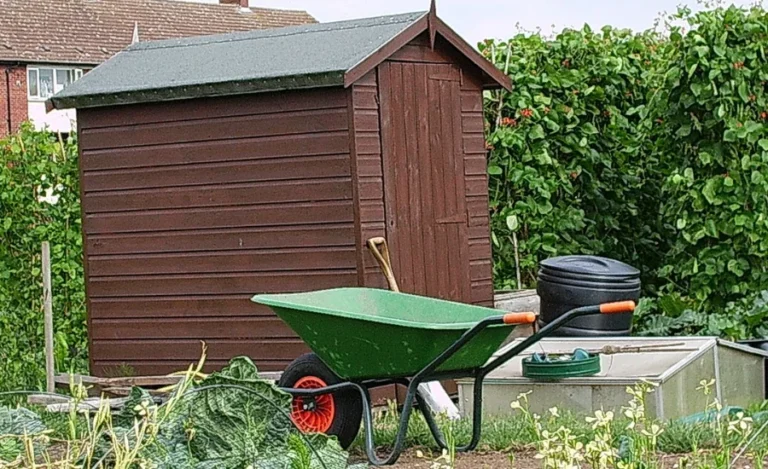Ultimate Tips for Designing a Stunning Low-Maintenance Garden Landscape
Creating a stunning garden landscape that requires minimal upkeep is the dream of many homeowners. A well-designed, low-maintenance garden not only saves time and effort but also enhances the beauty and value of your property. Whether you’re a seasoned gardener or a beginner, understanding the principles of low-maintenance gardening can help you design a space that thrives with minimal intervention. In this article, we’ll explore practical tips and strategies to help you create a garden that remains beautiful year-round, with little more than routine care. From selecting the right plants to implementing smart irrigation solutions, you’ll find everything you need to transform your outdoor space into a peaceful, low-maintenance oasis.
Understanding the Principles of Low-Maintenance Gardening
Designing a low-maintenance garden revolves around a few key principles that keep your landscape beautiful with minimal effort. The focus is on selecting the right plants, smart design, and sustainable practices that work with nature rather than against it. By following these principles, you can enjoy a thriving garden without constant upkeep. Here’s a brief overview of the essentials.
- The Importance of Plant Selection: Choosing the right plants is crucial. Opt for native species that are naturally adapted to your local climate, reducing the need for extra watering and care. Group plants with similar needs together to simplify maintenance even further.
- Sustainable Gardening Practices: Incorporate sustainable techniques like mulching, composting, and water conservation to maintain soil health and minimize resource use. These practices not only reduce your workload but also benefit the environment.
- Smart Garden Design: A well-planned garden layout minimizes maintenance. Incorporate hardscaping elements, like pathways and patios, to reduce planting areas, and use groundcovers instead of lawns to cut down on mowing and watering.
- Understanding the Lifecycle of Your Garden: Recognize that your garden will evolve over time. While initial setup may require more effort, a well-planned garden will become increasingly self-sustaining. Choosing slow-growing plants and perennials helps ensure long-term ease of care.
- Debunking Myths: Low-maintenance gardens can be just as attractive as traditional ones. While they require less care, some regular tasks, like seasonal pruning and mulching, are still necessary. Understanding this helps set realistic expectations.
Planning Your Low-Maintenance Garden Landscape
A successful low-maintenance garden starts with careful planning. Before you begin planting, it’s essential to evaluate your garden space and set clear, realistic goals. Planning allows you to make informed decisions about what will work best in your garden, considering factors like sunlight, soil type, and your personal preferences. In this section, we’ll guide you through the steps to assess your garden and define your vision, ensuring a solid foundation for your low-maintenance landscape.
Assessing Your Garden Space
Understanding the unique characteristics of your garden space is the first step in designing a low-maintenance landscape. Take the time to evaluate the size, shape, and environmental conditions of your garden. Consider factors such as sunlight exposure, shade, wind patterns, and soil type, as these will influence your plant choices and garden layout. A thorough assessment helps you make the best decisions for a garden that requires minimal care.
Setting Clear Goals
Once you’ve assessed your garden space, it’s crucial to set clear goals for what you want to achieve. Decide on the primary purpose of your garden—whether it’s for relaxation, entertaining guests, incorporating features like a fish pond design, or simply enhancing your home’s curb appeal. By prioritizing features that require less upkeep, you can design a garden that meets your needs while staying easy to manage.
Choosing the Right Plants for a Low-Maintenance Garden
The plants you choose for your garden play a pivotal role in determining how much maintenance it will require. Opting for plants that are well-suited to your climate and garden conditions can drastically reduce the need for watering, fertilizing, and other care routines. In this section, we’ll explore the best plant types for a low-maintenance garden, from drought-tolerant species to perennials and shrubs that provide year-round beauty with minimal effort.
Selecting Drought-Tolerant Plants
Drought-tolerant plants are ideal for low-maintenance gardens, as they require less water and care. These plants have adapted to survive in dry conditions, making them perfect for gardens in regions prone to water restrictions or dry spells. By incorporating a variety of drought-tolerant plants, you can create a vibrant, water-wise garden that remains lush and green with minimal irrigation.
Incorporating Perennials and Groundcovers
Perennials are a fantastic choice for low-maintenance gardens because they return year after year without the need for replanting. Paired with groundcovers, which spread across the soil and reduce the need for weeding, these plants help create a garden that looks after itself. This combination ensures a full, colorful garden with significantly reduced maintenance.
Low-Maintenance Shrubs and Trees
Shrubs and trees form the backbone of any garden, providing structure and height. Selecting low-maintenance varieties means you’ll spend less time pruning and caring for them. Look for shrubs and trees that are disease-resistant and slow-growing to minimize the need for regular trimming and upkeep.
Efficient Garden Design Strategies
An efficient garden design is key to minimizing maintenance while maximizing beauty. Thoughtful planning can reduce the need for frequent watering, weeding, and other garden chores. In this section, we’ll cover design strategies that help you create a garden that is both functional and easy to maintain, from grouping plants by watering needs to using mulch effectively.
Grouping Plants by Watering Needs
Grouping plants with similar water requirements together, known as hydrozoning, is an effective way to conserve water and simplify irrigation. This strategy ensures that each plant receives the right amount of water without overwatering or underwatering, leading to healthier plants and reduced maintenance.
Implementing Mulching Techniques
Mulching is a simple yet powerful tool for reducing garden maintenance. By covering the soil with mulch, you can suppress weeds, retain moisture, and regulate soil temperature, all of which contribute to a healthier, low-maintenance garden. In this section, we’ll discuss different types of mulch and how to use them effectively.
Reducing Lawn Area
Traditional lawns are one of the most maintenance-intensive parts of a garden. By reducing lawn areas and incorporating alternatives like groundcovers, gravel, or synthetic turf, you can significantly cut down on the time and effort needed for lawn care. This section will provide tips for minimizing lawn space while maintaining a beautiful garden.
Smart Irrigation Solutions
Watering can be one of the most time-consuming aspects of garden care, but with smart irrigation solutions, you can make this task almost effortless. From installing drip irrigation systems to harvesting rainwater, these techniques ensure your garden gets the water it needs with minimal waste and effort. In this section, we’ll explore the best irrigation methods for a low-maintenance garden.
Installing Drip Irrigation Systems
Drip irrigation systems are highly efficient, delivering water directly to the roots of plants, reducing evaporation, and minimizing water usage. This method is ideal for low-maintenance gardens, as it can be automated to provide consistent watering with minimal manual intervention. We’ll guide you through setting up an effective drip irrigation system that keeps your garden thriving.
Using Rain Barrels and Water Collection Systems
Harvesting rainwater is an eco-friendly way to water your garden without relying on municipal water supplies. Installing rain barrels and other water collection systems can reduce your garden’s dependence on external water sources while ensuring it stays well-hydrated. This section will cover the benefits and best practices for using rain barrels in your low-maintenance garden.
Low-Maintenance Garden Features
Incorporating low-maintenance features into your garden design can enhance its beauty while reducing the time and effort required for upkeep. Hardscaping elements and low-maintenance materials such as artificial grass can be used to create a visually appealing, easy-to-care-for garden that reduces the need for regular mowing, watering, and fertilizing. In this section, we’ll discuss the best low-maintenance features to consider for your garden.
- Hardscaping Elements: Hardscaping, which includes elements like pathways, patios, and rock gardens, can greatly reduce the amount of plant care required in a garden. These features not only add visual interest but also minimize areas that need regular maintenance. We’ll explore the best low-maintenance materials and designs for your garden’s hardscaping needs.
- Incorporating Automatic Lighting and Water Features: Automatic lighting and low-maintenance water features can add ambiance and tranquility to your garden without requiring constant attention. Solar-powered lights and self-cleaning water features are excellent choices for maintaining a beautiful garden with minimal effort. This section will provide tips on selecting and maintaining these features.
Seasonal Maintenance Tips
Even a low-maintenance garden requires some attention throughout the year. By streamlining your seasonal garden chores, you can keep your garden looking its best with minimal effort. This section will provide practical tips for simplifying seasonal maintenance tasks and planning for the long-term care of your garden.
- Simplifying Seasonal Garden Chores: Each season brings specific tasks that need to be addressed, such as pruning, fertilizing, and protecting plants from harsh weather. By focusing on easy, efficient methods, you can tackle these chores without spending excessive time in the garden. We’ll provide a seasonal guide to help you keep your garden in top shape throughout the year.
- Long-Term Garden Care: As your garden matures, it may require some adjustments to maintain its low-maintenance nature. This section will discuss strategies for long-term care, including how to deal with aging plants, manage growth, and plan for the future of your garden. By anticipating these needs, you can ensure your garden remains beautiful and easy to manage for years to come.
Conclusion
Designing a stunning, low-maintenance garden landscape is entirely achievable with the right planning and techniques. By following the tips outlined in this article, you can create a garden that not only enhances your home’s beauty but also allows you to enjoy it without being burdened by constant upkeep. Whether you’re starting from scratch or revamping an existing garden, the strategies shared here will help you build a serene, sustainable space that thrives with minimal intervention. Embrace the principles of low-maintenance gardening, and you’ll find that creating your dream garden is easier than you ever imagined.






